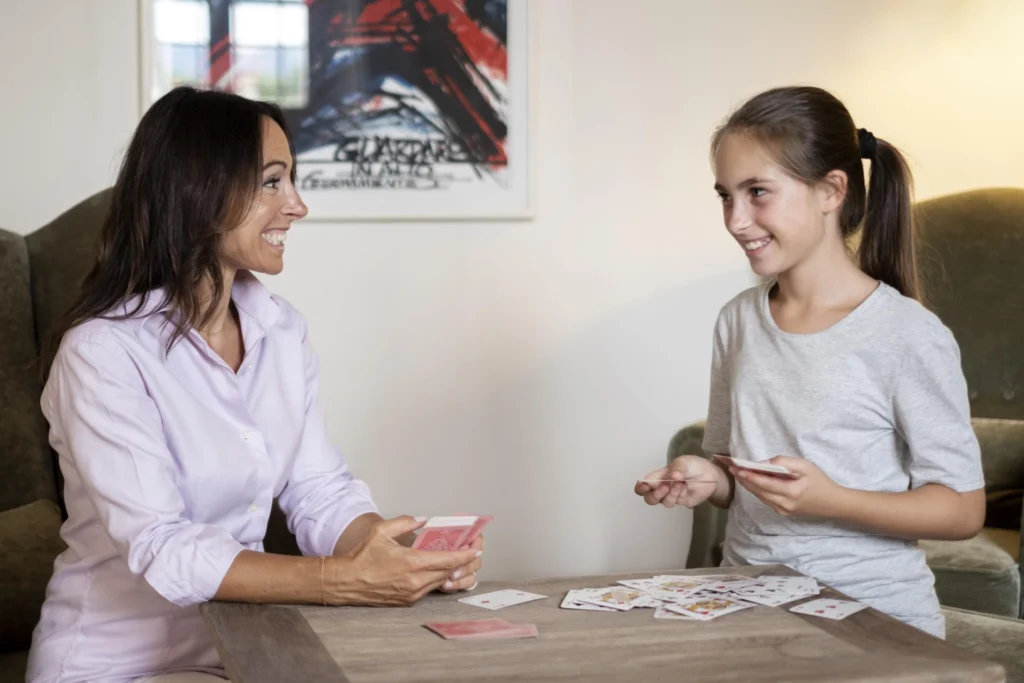Table of Contents
- Exploring Teen Residential Treatment: Defining the Path
- Recognizing the Need: When Does Teen Residential Treatment Become Necessary?
- Gauging the Potential: Will Residential Treatment Work for My Teen?
- Family Involvement: The Importance for Long-Term Success
- Making Informed Choices: Factors to Consider
- Key Takeaways

Exploring Teen Residential Treatment: Defining the Path
At its essence residential treatment for teens is an immersive approach that provides intensive support and intervention for adolescents facing a wide range of behavioral and emotional challenges.
In this post, I outline a number of key factors to assist parents and guardians who are considering Residential Treatment for their teens.
One key aspect of this approach is that it involves teens living within a structured therapeutic environment. Unlike outpatient therapy, residential treatment requires adolescents to reside in a controlled setting where they receive constant supervision and support.
This immersive environment ensures that teens are removed from potentially harmful influences, allowing them to focus on their recovery and personal growth.
| One of the notable features of residential treatment is the availability of 24/7 professional support. Trained therapists, counselors, and staff members are always on hand to address the varying needs of the teens.
This continuous support is crucial in crisis situations and for maintaining a safe and therapeutic atmosphere throughout the day and night. It helps teens feel secure and understood, promoting their emotional well-being.
Moreover, residential treatment offers comprehensive care. Beyond therapy, it encompasses education and life skills development. Teens receive academic instruction to keep up with their studies and prepare for the future.
Additionally, they acquire essential life skills such as problem-solving, communication, and coping mechanisms, which are vital for their long-term success and resilience.
In conclusion, residential treatment for teens is an immersive approach that offers structured living, round-the-clock professional support, and a holistic approach to healing.
This intensive model helps troubled adolescents navigate challenges, develop crucial skills, and ultimately, achieve positive and lasting change in their lives.
Recognizing the Need: When Does Teen Residential Treatment Become Necessary?

Residential treatment for teens is a specialized form of therapeutic intervention designed to address severe emotional, behavioral, or substance-related challenges that adolescents may face.
These programs provide a structured and supportive environment where teens can receive intensive treatment and support.
Here are two key aspects to consider when discussing why teens with severe struggles, including those who pose a danger to themselves or others, may benefit from residential treatment.
Severe Emotional, Behavioral, or Substance-Related Challenges
Intensive Therapy: Residential treatment programs offer teens access to consistent, intensive therapy and counseling. This includes individual therapy, group therapy, and family therapy sessions. These therapy modalities allow teens to delve into the root causes of their challenges and develop coping skills.
Structured Environment: Teens with severe struggles often benefit from the highly structured and supervised environment provided by residential treatment facilities. This structure helps establish routines and boundaries, which can be particularly helpful for teens who struggle with impulse control and emotional regulation.
Peer Support: Interacting with peers who are facing similar challenges can be a significant benefit. Teens often find comfort and support in knowing they are not alone in their struggles. Peer support can also create a sense of belonging and encourage positive behavioral changes.
Education and Skill Development: Many residential treatment programs offer educational components to help teens keep up with their studies while receiving treatment. Additionally, life skills training can help teens acquire the tools they need to navigate the challenges they’ll face after leaving the program.
Safety and Monitoring: For teens who are at risk of self-harm or substance abuse, residential treatment facilities provide a controlled and secure environment. Trained staff can monitor and intervene as needed to ensure the safety of the residents.

Danger to Self or Others:
Suicidal Behavior: When a teen engages in self-harming behaviors or expresses suicidal thoughts, it’s a critical sign that they need immediate and intensive help. Residential treatment can offer 24/7 supervision and access to mental health professionals who can assess and address these urgent concerns.
Violence or Aggression: Some teens may exhibit aggressive or violent behaviors that pose a risk to themselves or those around them. Residential treatment programs can implement behavioral management strategies and provide therapy to address the underlying causes of these behaviors.
Substance Abuse: Teens who engage in substance abuse, especially when it leads to dangerous situations or addiction, may require the detoxification, counseling, and rehabilitation services that residential treatment facilities can offer.
Psychiatric Conditions: Teens with severe psychiatric conditions like schizophrenia or severe mood disorders may require residential treatment when their symptoms make it difficult for them to function safely in a regular home environment.
In all cases, the goal of residential treatment for teens is to provide a safe and therapeutic environment where they can receive the level of care and support they need to stabilize, gain insight into their challenges, and develop the skills necessary for a healthier and more productive life.
It’s important for parents and guardians to work closely with mental health professionals to determine the most appropriate level of care for their teen’s specific needs.
Gauging the Potential: Will Residential Treatment Work for My Teen?

A successful residential treatment program should employ a tailored approach, drawing on professional expertise and involving families to achieve the best possible outcomes for the teens. Here’s how these three elements come together.
Tailored Approach: Catering to Unique Needs and Challenges
Comprehensive Assessment: The first step in an effective residential treatment program is a thorough assessment of the teen’s unique needs, strengths, and challenges. This assessment considers factors such as their mental health diagnosis, history, family dynamics, and any co-occurring issues like substance abuse.
Individualized Treatment Plans: Based on the assessment, an individualized treatment plan is created for each teen. This plan takes into account their specific goals, preferences, and any cultural or personal considerations. It outlines the therapeutic modalities, interventions, and goals tailored to address their needs.
Flexibility and Adaptability: Teens’ needs can evolve over time, and an effective program should be flexible enough to adapt the treatment plan as necessary. Regular evaluations and adjustments ensure that the treatment remains relevant and effective throughout their stay.
Holistic Approach: A tailored approach doesn’t just focus on the presenting issues but also considers the teen’s overall well-being. It may include educational support, life skills training, recreational activities, and therapies to promote emotional, physical, and social development.
Professional Expertise: Collaborative and Holistic Care
Multidisciplinary Team: Residential treatment facilities typically employ a multidisciplinary team of professionals, including psychiatrists, psychologists, therapists, nurses, and educators. This diverse team collaborates to provide comprehensive care.
Regular Consultation and Case Review: Team members regularly consult and review the progress of each teen. This ensures that all aspects of their treatment are aligned, and any necessary adjustments can be made promptly.
Evidence-Based Practices: Professionals in these programs use evidence-based therapeutic approaches to address specific issues, such as cognitive-behavioral therapy (CBT), dialectical behavior therapy (DBT), or trauma-informed care. This expertise allows for targeted and effective interventions.
24/7 Supervision and Support: Teens in residential treatment receive round-the-clock support and supervision, ensuring their safety and immediate access to care in crisis situations.
Family Involvement: The Importance for Long-Term Success

Family Education and Therapy: Families are encouraged to participate in their teen’s treatment through family therapy sessions. These sessions help families understand the challenges their teen is facing and develop healthier communication and coping strategies.
Transition Planning: Involving families in the treatment process ensures a smoother transition back home or to a less restrictive environment. Families can work with the treatment team to develop aftercare plans and strategies for ongoing support.
Emotional Support: Teens often derive significant emotional support from their families. When families are actively involved in the treatment process, it can strengthen the support system that the teen will rely on post-treatment.
Prevention and Relapse Management: Family involvement also helps in preventing relapse by educating families about potential triggers and warning signs. It equips them with the knowledge and tools to provide ongoing support and monitor their teen’s progress.
In summary, residential treatment for teens is most effective when it employs a tailored approach, leverages professional expertise through a multidisciplinary team, and actively involves families in the treatment process.
This collaborative and holistic approach maximizes the chances of long-term success and helps teens develop the skills and resilience they need to thrive beyond their time in treatment.
Making Informed Choices: Factors to Consider
This section guides parents and guardians in making well-informed decisions. The severity of a teen’s challenges plays a crucial role in determining the need for Residential Treatment. Here’s an explanation of how it factors in:

Severity of Challenges
Assessment: The first step in deciding if a teen requires residential treatment is a comprehensive assessment by mental health professionals. This assessment evaluates the nature and severity of the challenges the teen is facing, which may include issues like substance abuse, severe depression, self-harm, behavioral disorders, or trauma.
Safety Concerns: If a teen poses a danger to themselves or others due to their challenges, residential treatment may be necessary to provide a secure and controlled environment. This is particularly important when the teen has a history of self-harm or suicidal tendencies.
Ineffectiveness of Outpatient Care: When previous attempts at outpatient therapy, counseling, or other less intensive interventions have proven ineffective in addressing the teen’s challenges, residential treatment may be considered. It provides round-the-clock care and a structured environment that may be better suited to addressing severe and complex issues.
Stabilization: For teens dealing with severe addiction, eating disorders, or acute mental health crises, residential treatment can offer the necessary time and resources for stabilization. This is often a prerequisite for more in-depth therapeutic work.
Therapeutic Techniques
Individualized Treatment Plans: Residential treatment programs typically offer individualized treatment plans tailored to each teen’s specific needs. This customization ensures that therapeutic techniques align with the teen’s challenges and strengths. For example, a teen with a history of trauma may receive trauma-focused therapy, while someone struggling with substance abuse may benefit from addiction counseling.
| Evidence-Based Therapies: Effective residential treatment programs incorporate evidence-based therapeutic techniques such as Cognitive-Behavioral Therapy (CBT), Dialectical Behavior Therapy (DBT), and Eye Movement Desensitization and Reprocessing (EMDR) for trauma. The choice of therapy should be based on the teen’s diagnosis and assessment.
Group Therapy: Group therapy sessions in residential treatment allow teens to learn from their peers, practice social skills, and gain insights into their own issues. This can be particularly valuable for teens struggling with interpersonal challenges.
Support System
Family Involvement: Ongoing family involvement is crucial during a teen’s residential treatment. Family therapy sessions can help address family dynamics, and communication issues, and provide the necessary support for the teen’s recovery. Parents and caregivers are often taught skills and strategies to support their teen’s progress and maintain a healthy family environment.
Aftercare Planning: The significance of post-treatment support cannot be overstated. A well-developed aftercare plan ensures a smooth transition back into the community and helps the teen maintain the progress made during residential treatment. This may include continued therapy, support groups, educational support, and relapse prevention strategies.
Long-Term Recovery: The challenges a teen faces may require ongoing support even after leaving residential treatment. Having a strong support system in place, which can include family, friends, therapists, and support groups, is essential for long-term recovery and preventing relapse.
In summary, the severity of a teen’s challenges is a critical factor in determining the need for residential treatment. The program’s therapeutic methods should be tailored to address these challenges effectively, and ongoing family involvement and post-treatment support are essential for sustained progress and successful reintegration into the community.
Key Takeaways
- Path to Transformation: Teen Residential Treatment offers an immersive and comprehensive approach to addressing challenges.
- Recognizing the Signs: Specific indicators suggest when Residential Treatment becomes necessary for teens.
- Evaluating Success: The potential effectiveness of Residential Treatment hinges on tailored care, professional expertise, and family engagement.
- Empowered Decisions: Consider factors like severity, therapeutic approach, and family involvement when considering Residential Treatment.


Anna graduated from Texas Tech University in 2012 with a Bachelor of Arts in Psychology and from Texas Wesleyan University in 2015 with a Master of Arts in Professional Counseling. Anna has been in the mental health field since 2015 and held a variety of leadership roles since 2017 in Residential, Inpatient, PHP/IOP and private practice levels of care. Anna approaches therapy and leadership with the mindset that we are all one life event from seeking care ourselves and aims to foster an environment in which both the client and staff well-being are the priority. Anna is an introverted foodie who enjoys reading, watching dateline/sports and spending time with her husband, daughter, and fur babies, Dora & Teddy.




